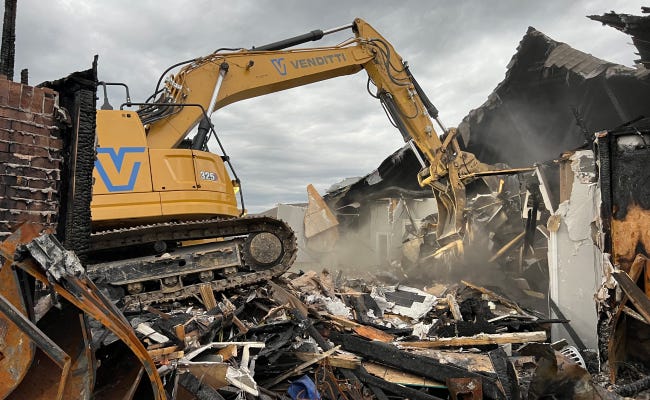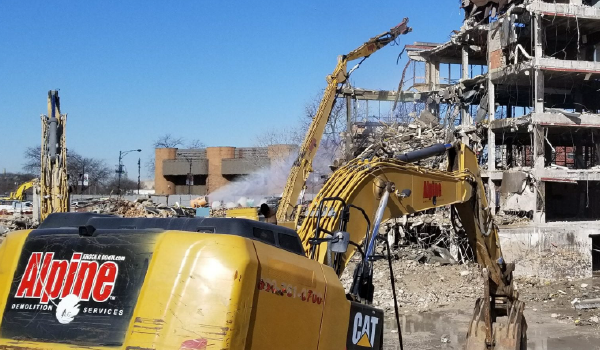From Idea to Completion: The Process of Interior Demolition Explained
From Idea to Completion: The Process of Interior Demolition Explained
Blog Article
Professional Tips for Safe and Effective Indoor Demolition Job

Assessing the Space
Evaluation of the spatial design is critical before beginning any indoor demolition job to guarantee efficiency and safety and security throughout the job. Prior to starting the demolition process, a thorough evaluation of the space is crucial to identify possible hazards, architectural considerations, and the ideal method for the demolition job. Understanding the format of the indoor room enables correct planning and organization of the task, making the most of and decreasing dangers efficiency.
Safety Precautions
Before proceeding with indoor demolition work, prioritizing safety precautions is important to mitigate prospective threats identified during the evaluation of the spatial design. One critical safety step is making certain all employees have gotten correct training on the secure procedure of equipment and tools specific to the demolition tasks available. Personal safety devices (PPE) such as construction hats, safety glasses, gloves, and steel-toed boots must be worn in all times to reduce the risk of injuries from dropping particles or hazardous materials. Additionally, developing clear interaction networks amongst the demolition staff member and marking a safety supervisor to oversee procedures can help avoid accidents and respond immediately to any kind of emergency situations that might develop. It is likewise imperative to conduct normal examinations of the job location to recognize and deal with any possible threats promptly. By sticking to these security preventative measures, indoor demolition work can be accomplished successfully and without endangering the health of the employees involved.
Handling Hazardous Materials
When experiencing unsafe materials during indoor demolition work, correct handling procedures are vital to make sure the security of workers and protect against environmental contamination. interior demolition. Before beginning any demolition tasks, it is necessary to conduct a comprehensive analysis to determine any kind of potentially hazardous materials existing in the structure. Usual hazardous materials that may be come across consist of asbestos, lead-based paint, mold and mildew, and various chemicals
During the demolition process, it is crucial to take preventative measures to minimize the spread of dangerous materials. This consists of making use of ideal personal protective devices such as respirators, gloves, and safety apparel. In addition, control measures such as sealing off the workspace with plastic bed linen and using HEPA filters on devices can assist stop the launch of dangerous fragments into the air.
Correct disposal of unsafe products is likewise important. It is very important to follow regional laws for the disposal of specific harmful products and to work with certified experts for the removal and disposal of certain materials. By adhering to these procedures, interior demolition work can be conducted safely and effectively while decreasing the risks connected with managing harmful materials.
Tools and Equipment
Effectively furnished for the safe handling of unsafe materials, indoor demolition work demands the utilization of specialized devices and devices designed to help with the effective dismantling of frameworks (interior demolition). Crucial tools for interior demolition consist of pry bars, sledgehammers, and reciprocating saws. Lever are crucial for getting rid of trim, walls, and other affixed materials without triggering excessive damages to bordering surfaces. Sledgehammers are made use of to break down wall surfaces, while reciprocating saws are effective for puncturing materials like drywall and timber swiftly and precisely.

Waste Disposal

Effective waste disposal More hints plays a crucial role in keeping a secure and clean setting during interior demolition projects. Proper waste monitoring not just makes sure the site's cleanliness but additionally adds to the overall success and performance of the job (interior demolition). When handling garbage disposal, it is necessary to segregate different kinds of materials such as wood, steel, concrete, and hazardous materials to assist in recycling and safe disposal techniques
To improve garbage disposal procedures, it is advised to have marked bins for various waste categories and plainly identify them to prevent confusion. Additionally, scheduling regular waste pick-ups and making sure that all waste is correctly included and safeguarded can help stop mishaps and maintain a hazard-free workspace.
Collaborating with respectable garbage disposal companies or recycling centers is a good idea to ensure that waste is managed in conformity with policies and ecological requirements. By focusing on efficient waste disposal methods, indoor demolition projects can be performed smoothly click to read more and responsibly, advertising a secure working atmosphere for all entailed.
Conclusion
In final thought, indoor demolition job calls for careful assessment of the room, rigorous adherence to security preventative measures, correct handling of hazardous materials, application of ideal devices and equipment, and liable garbage disposal practices. By following these expert tips, individuals can guarantee a risk-free and successful demolition task.

Report this page